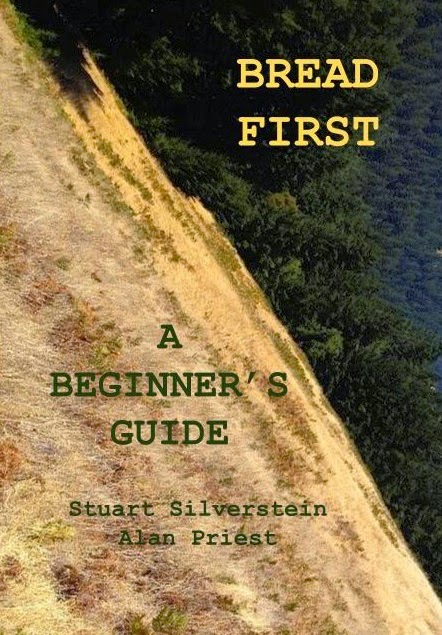The Earth Oven con't
When the mud step is complete, add additional rocks to the base to get the base to its final height that should be about level with the top of the firebrick oven floor. However, the tongue should be about a 1/2 inch higher than the rocks because it will make it a little easier to get food in and out of the oven.
You can let the oven dry for an hour, a day, or you can cut the door opening right away. Abbott and Nancy cut the door opening immediately. Cutting the right size door opening is important because you want the oven to heat up properly, and you’ll also need room to maneuver breads and pizzas around inside the oven.
Many years ago I became fascinated with earth oven construction after reading a book called, “The Bread Ovens of Quebec” by Boily and Blanchette. This is not an easy book to find, but if you come upon it, then buy the book. Just recently, however, the book became available for a free download on the web. Not only is it filled with interesting folklore, but there’s real information on clay oven construction. The authors found that the most successful ovens had door opening dimensions that related to interior oven height. Others have used this formula and I saw no need to reinvent something that has been working for a very long time. Therefore, I use it too, but with some wiggle room. Door height should be 63% of the height of your sand mold, and your mold should be 14 inches high. 0.63 X 14 = 8.82 Generally, the door width is half the diameter of the floor. Your floor diameter is 22 1/2 inches, half of this is 11 1/4 inches.
I’m going to suggest that you make your door opening just a little bigger, and your oven will still work fine. Go with 9 inches for the height, but make the width 14 inches. You’ll be extending the door opening just slightly beyond the two end tongue bricks, but that shouldn’t matter. The larger door opening will make it much easier to bake pizzas and flat breads. If you adhere rigidly to the Quebec formula, then you might find that you really don’t have as much room as you’d like to have in getting breads and pizzas in and out of the oven. I think the Quebecois were more interested in baking breads than pizzas.
For the final door opening, angle the cut inward because it will then be easier to fit a door to the opening. Use the inside cut of the door opening when measuring because it will be slightly smaller than the outside measurement. Using your hand, scoop out all the sand. You may or may not be able to feel the newspaper, which is the end of the line. Pull out the newspaper, but if some of it has been trapped by the clay, don’t worry about it. Left over paper will burn out as soon as you fire the oven. A flashlight may also help you to figure out when you’re done scooping sand. Get all the sand out because you don’t want to find it in your bread.






No comments:
Post a Comment